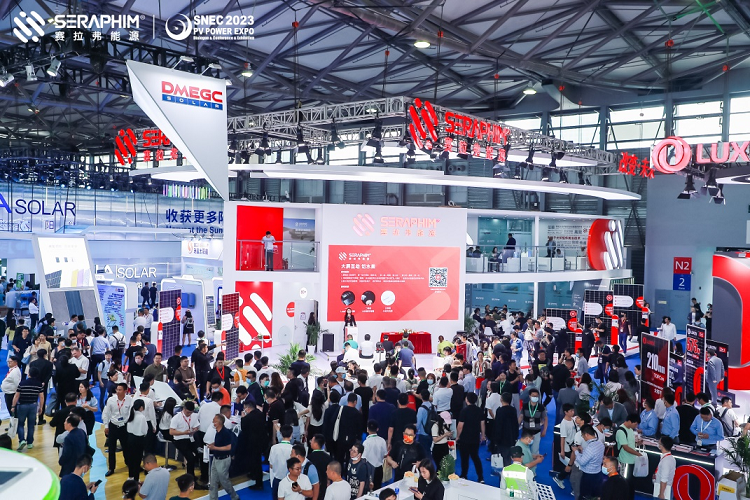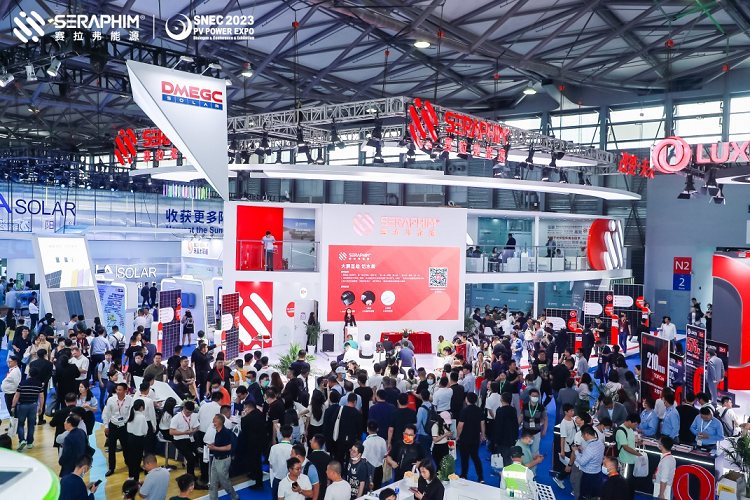
The photo shows the exhibition area of the Seraphim at the SNEC 16th (2023) International Photovoltaic Power Generation and Smart Energy Conference & Exhibition held recently in Shanghai, east China.
SHANGHAI, May 30 (Xinhua) -- The advancement of the dual carbon goals has once again opened up growth space for the photovoltaic industry in China, according to Polaris Li, president of Seraphim Energy Group Co., Ltd. (Seraphim), a global leading solar module manufacturer.
Li made the remarks at the SNEC 16th (2023) International Photovoltaic Power Generation and Smart Energy Conference & Exhibition held recently in Shanghai, east China.
According to the National Energy Administration, from January to April this year, total installed capacity of photovoltaic and wind power in China reached 820 million kilowatts, accounting for 30.9 percent of the country's installed capacity of power generation. In breakdown, the installed capacity of photovoltaic power generation amounted to 440 million kilowatts, accounting for 16.6 percent of the country's total.
With the advancement of the dual carbon goals, the growth of the photovoltaic industry in the country still has no "ceiling", said Li.
Earlier, China announced to reduce carbon emission with the ambitious goals of achieving carbon peak before 2030 and carbon neutrality before 2060.
Li believed that according to the calculations of some experts, in order to achieve the goal of carbon neutrality, the proportion of photovoltaic and wind power in the power system in the future must reach 70 percent. However, the current proportion of solar and wind energy is only about 11 percent.
Although the market prospect is promising, the industry will have an agglomeration effect in the future, and will seea higher degree of concentration, said Li.
In response to market changes, Seraphim has planned to expand its production capacity to more than five times during the 14th Five-Year Plan period (2021-2025). It will make efforts to meet the component demands through nearby manufacturing, production, and delivery, according to Li. (Contributed by Chen Yunfu, edited by Hu Pingchao, hupingchao@xinhua.org)




 A single purchase
A single purchase









